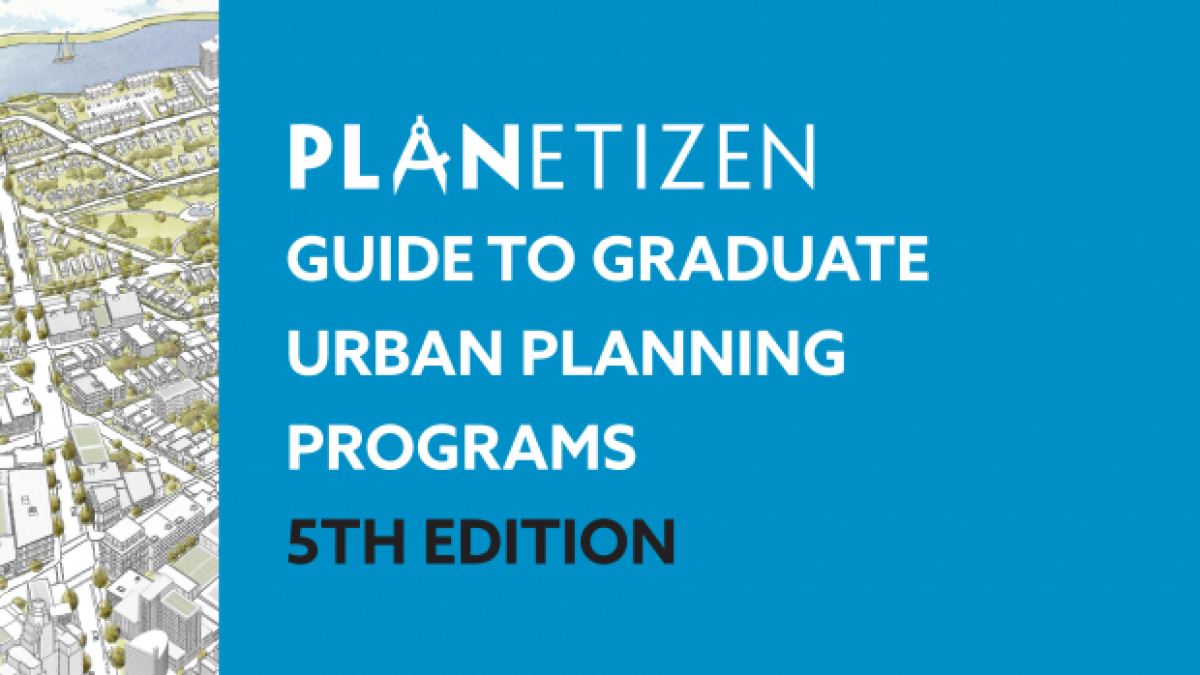Arizona State University’s Master of Urban and Environmental Planning program, in the School of Geographical Sciences and Urban Planning, is gaining in national recognition.
Planetizen — an online network and news outlet for the planning, design, and development community — has released its annual ranking for graduate urban planning programs across the United States. The Master of Urban and Environmental Planning program made the list as the No. 22 planning program in the country.
To establish the ranking, Planetizen considers a variety of aspects including student enrollment, student-to-faculty ratio, diversity of faculty and students, citations by faculty, student employment rates, as well as the opinions of planning educators. In total, 96 programs were considered this year with the top 25 earning a ranking on their annual list.
The School of Geographical Sciences and Urban Planning's position at 22 marks a rise of three spots for the program over last year’s ranking. The program ranks as the 6th best in the western region and when accounting for student enrollment in the program, the master's program jumps to the 3rd best small program in the nation. It is also the only program in Arizona to make the list.
The forward momentum marks an exciting time for the school and the Master of Urban and Environmental Planning (MUEP) program.
“We are just getting started with tuning the MUEP program to ensure our students land great jobs and have the skills to meet industry and community needs,” said Trisalyn Nelson, director of the School of Geographical Sciences and Urban Planning. “The MUEP program has a new leadership structure with more support for students interested in gaining practical skills and connecting with future employers.”
Leading the program is Deirdre Pfeiffer. Under her direction, the program has placed an emphasis on meeting student needs, including the creation of specialized courses to help students develop the nuanced abilities they will need in their careers. "We are increasingly providing skills-based education to prepare students to hit the ground running with their careers after graduation," Pfeiffer said. "We have a growing transportation cluster, which is engaging students in lots of exciting applied projects and we are involved in community-engaged planning work in Arizona's tribal communities."
The school also hosted a workshop based on the challenges of planning for airports in urban areas. The workshop exposed students to planning theory, case law, methods, and case studies, along with practitioner techniques and tools to help them tackle this real-world problem.
The program is also currently in a state of growth. Sara Meerow will be joining the School of Geographical Sciences and Urban Planning this fall. An expert on resilience and green infrastructure, Meerow will boost our expanding cadre of planning experts with innovative perspectives that will make major impacts on our communities.
“Our faculty are engaging in research and practice on how to make cities happy, healthy, and resilient,” Nelson said.
Elevating the transdisciplinary nature of the School of Geographical Sciences and Urban Planning, the master's program is beginning to work closely alongside the school’s transformative research centers — the Urban Climate Research Center and the Spatial Analysis Research Center. This aspect of the program was highlighted as a program strength in the Planetizen report: “The MUEP program is enriched by the interdisciplinary participation of faculty from other academic units of the university, such as the School of Sustainability and the School of Public Affairs, the relationships with leading planning practitioners in the region, state and beyond.”
To learn more about the Master of Urban and Environmental Planning program program, visit: geoplan.asu.edu/muep.
More Environment and sustainability

ASU President Michael Crow named to TIME100 Climate list
Arizona State University President Michael Crow has been named to the 2024 TIME100 Climate list of leaders and innovators driving…

Driving green desalination
Wilderness survival TV show hosts, pirates and water treatment researchers agree on one thing: Most natural water sources are not…

ASU preservation facility serves as test bed for rooftop heat mitigation
A roof coating that uses thermal energy storage materials from Arizona State University spinout EnKoat is halting the heat in…
